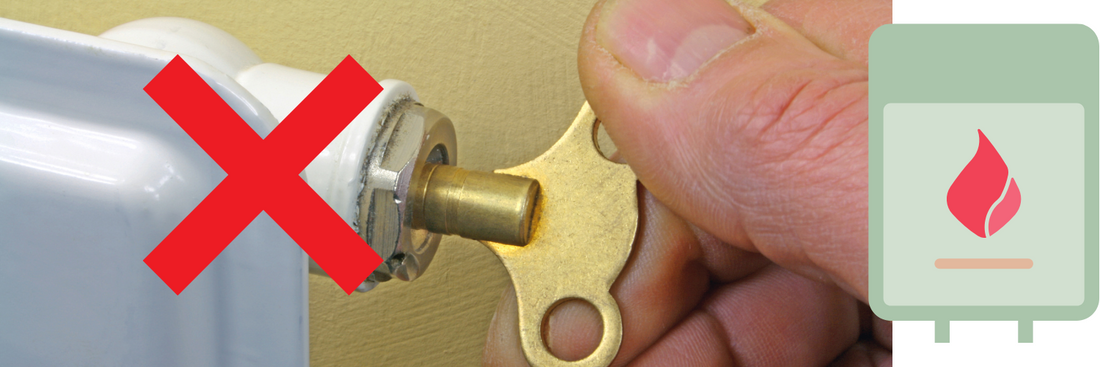DO NOT BLEED RADIATORS WITH THE HEATING ON!
Radiators are essential for keeping our homes warm, especially during the colder months. Regular maintenance, including bleeding radiators, ensures they work efficiently. But what happens if you bleed a radiator with the heating on? This comprehensive guide will delve into the risks and proper procedures, ensuring you handle this task safely and effectively.
#### **The Basics of Radiator Bleeding**
Bleeding a radiator involves releasing trapped air that prevents hot water from circulating effectively. Signs that your radiator needs bleeding include cold spots at the top, gurgling noises, and the presence of mould on nearby walls. Regularly bleeding radiators helps maintain their efficiency and ensures even heat distribution.
#### **Why You Shouldn't Bleed a Radiator with the Heating On**
1. **Risk of Burns and Injuries:**
- **High Temperature:** Radiators and the water inside them can become extremely hot when the heating system is on. Opening the bleed valve can cause hot water to spray out, posing a significant risk of burns.
- **Pressure Release:** The high pressure from a heated system can cause a sudden release of water, which can be dangerous if you're not prepared.
2. **Ineffective Bleeding Process:**
- **Drawing in More Air:** When the heating is on, the pump circulates water throughout the system. Bleeding a radiator under these conditions can actually draw more air into the system, making the problem worse rather than solving it.

3. **Potential Damage to the Boiler and Pump:**
- **Air in the Pump:** When you bleed a radiator with the heating on, the pump can draw air into itself. Air in the pump can cause it to run dry, leading to overheating and potential damage.
- **Overheating Boiler:** If the pump gets damaged due to air intake, the boiler might overheat. Overheating can lead to significant damage and expensive repairs.
#### **Proper Steps to Bleed a Radiator**
1. **Turn Off the Heating:**
- Ensure the heating system is off and the radiators are cool to the touch. This reduces the risk of burns and makes the bleeding process more effective.
2. **Identify Problematic Radiators:**
- With the heating initially on, check each radiator for cold spots by running your hand over them. Note any radiators that are cold at the top, as these will need to be bled.
3. **Gather Necessary Tools:**
- You will need a radiator key (or a flat head screwdriver for some models), a cloth or rag, an old towel, and a container or bowl to catch any water.
4. **Open the Bleed Valve:**
- Place the towel and container under the bleed valve to catch any water. Insert the radiator key into the valve and turn it anti-clockwise. You will hear a hissing sound as the trapped air escapes. Once water starts to flow steadily, close the valve by turning it clockwise.
5. **Check the Boiler Pressure:**
- After bleeding the radiators, check the boiler pressure. The ideal pressure should be between 1.0 and 1.5 bars when the system is off. If the pressure is too low, you may need to re-pressurize the system according to your boiler's manual.
6. **Test Your Radiators:**
- Turn the heating back on and check the radiators for even heat distribution. If there are still cold spots, you may need to repeat the bleeding process or consult a professional.
#### **Additional Tips for Radiator Maintenance**
1. **Regular Bleeding:**
- Bleeding your radiators every few months can prevent air from building up in the system, ensuring they operate efficiently.
2. **Monitor Boiler Pressure:**
- Regularly check your boiler pressure and re-pressurize if necessary. This helps maintain an efficient heating system and prevents potential issues.
3. **Seek Professional Help:**
- If bleeding the radiators doesn’t solve the problem, or if you’re unsure about any part of the process, it’s best to consult a professional heating engineer.
#### **Conclusion**
Bleeding a radiator with the heating on is a practice fraught with risks. Not only can it result in burns and injuries, but it can also make the problem worse by drawing more air into the system. Additionally, the pump can draw in air, causing damage and leading to boiler overheating. Always ensure the heating is off and the radiators are cool before beginning the bleeding process. By following the proper steps and maintaining regular radiator care, you can ensure a warm, efficient home throughout the colder months.
For more detailed information on maintaining your heating system, visit [GJS Plumbing and Heating](https://www.gjsplumbingandheating.co.uk/can-you-bleed-a-radiator-when-heating-on/).


